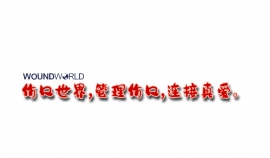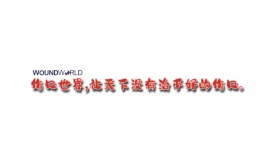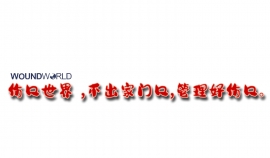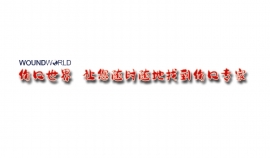文献精选
EXPERT WORKING GROUP:
■ Jacqui Fletcher, Independent Nurse Consultant and Clinical Editor of Wounds UK
■ Melissa Rochon, Trust Lead for SSI Surveillance, Research and Innovation, Directorate of Infection, Guy’s and St Thomas’ NHS Foundation Trust
■ Joshua Totty, Clinical Lecturer in Plastic Surgery, University of Hull
■ Jennie Wilson, Professor of Healthcare Epidemiology, College of Nursing, Midwifery and Healthcare, University of West London
■ Lucy Woodhouse, Clinical Lower Limb Tissue Viability Lead, Wye Valley NHS Trust
■ Kylie Sandy-Hodgetts, Associate Professor, Centre for Molecular Medicine & Innovative Therapeutics; Director, Skin Integrity Institute, Murdoch University; Adjunct Senior Research Fellow, School of Biomedical Sciences, University of Western Australia
REVIEWERS:
■ Mel Burden, Consultant Nurse & Joint Director, Infection Prevention and Control, Tissue Viability, Royal Devon and Exeter Hospital
■ Lisa Butcher, Lead Nurse for Infection Prevention & Control, Oxford University Hospitals NHS Foundation Trust; President of Infection Prevention Society
■ Lilian Chiwera, Independent Surgical Site Infection Surveillance & Prevention Consultant, IPC/SSI Prevention Matron, Sherwood Forest NHS Trust
■ Rhidian Morgan-Jones, Consultant Revision Knee Surgeon, Schoen Clinic, London
■ Judith Tanner, Professor of Adult Nursing, Faculty of Medicine & Health Sciences, University of Nottingham
BEST PRACTICE STATEMENT: SSI SURVEILLANCE: PROMOTING A SEAMLESS PATIENT JOURNEY FROM SURGERY TO COMMUNITY
PUBLISHED BY:
Wounds International A division of Omniamed, 108 Cannon Street, London EC4N 6EU, UK
Tel: +44 (0)20 3735 8244
Web: www.woundsinternational.com
© Wounds International, 2023
This document has been developed by Wounds International and is supported by an unrestricted educational grant from Essity.
This publication was coordinated by Wounds International with the Expert Working Group. The views presented in this document are the work of the authors and do not necessarily reflect the views of Essity.
Suggested citation:
Wounds International (2023) SSI Surveillance: Promoting a seamless patient journey from surgery to community. Wounds International, London
Available to download from: www.woundsinternational.com
EXPERT PANEL
Luxmi Dhoonmoon (Co-chair), Tissue Viability Nurse Consultant, Central and North West London NHS Foundation Trust
Harikrishna K.R. Nair (Co-chair), Head and Consultant of Wound Care Unit, Department of Internal Medicine, Kuala Lumpur Hospital, Malaysia; Professor, Faculty of Medicine, Lincoln University Malaysia; Professor, Institute of Health Management; Austria, Adjunct Professor, Department of Surgery, Institute of Medical Sciences, Banares Hindu University, India; Executive Director, College of Wound Care Specialists
Zulfiqarali Abbas, Endocrinologist, Department of Internal Medicine, Muhimbili University of Health and Allied Sciences, Dar es Salaam; Abbas Medical Centre, Dar es Salaam, Tanzania
Ethel Andrews, Wound Specialist, Life Brenthurst Hospital/Netcare Mulbarton Hospital, Johannesburg, South Africa; Visiting Lecturer, University of Witwatersrand; Past President, South African Burn Society; International Burns Society Nurse Award recipient 2022
Simone McConnie, Diabetic Footcare Specialist Podiatrist, Comfeet Foot Care Clinic, Barbados
Jennifer Pearson, Head of Nursing Royal Orthopaedic Hospital Birmingham; BAME Nurse of the Year 2022; Regional Lead Chief Nursing Officer (England), Black Minority Ethnic Strategic Advisory Group
Mohamed Waheed, Plastic Surgeon, Head of the Department of Surgery, Indira Gandhi Memorial Hospital, Maldives
Mandika Wijeyaratne, Head of the Department of Surgery, Faculty of Medicine, University of Colombo, Sri Lanka
PUBLISHED BY:
Wounds International 108 Cannon Street London EC4N 6EU, UK
Tel: + 44 (0)20 7627 1510 该Email地址已收到反垃圾邮件插件保护。要显示它您需要在浏览器中启用JavaScript。 www.woundsinternational.com © Wounds International, 2023
FOREWORD
While patient populations vary across the world, evidence shows that in many areas there are discrepancies in wound care due to variations in skin tone; for example, patients with dark skin are more likely to be diagnosed with higher-category pressure ulcers (PUs) (Oozageer Gunowa et al, 2017). This is due to a lack of accurate assessment and early identification; for example, the initial "redness" seen on light skin may not be present in dark skin and thus be missed in the initial assessment. The majority of existing evidence around skin tones in wound care is in the field of PUs, with a lack of evidence identified in other conditions and wound types (Oozageer Gunowa, 2022).
A literature search published in 2022 (Oozageer Gunowa, 2022) highlighted gaps in the evidence around skin tones and the need for further research in this area of patient care. Further, in wound care education, there is a need for the inclusion of dark skin tones in casestudies and photographs as well as to address the gap in bias around light skin tones and lack of understanding of how to assess different skin tones (Dhoonmoon et al, 2021).
Skin changes in people with dark skin tones are not observed quickly enough on a global scale. ‘Global Majority’ is a collective term for people who are Black, Asian, Brown, dual-heritage, indigenous to the global south, and or have been racialised as 'ethnic minorities'; globally, these groups currently represent approximately 80% of the world's population (Campbell-Stephens, 2020).
To address these gaps, a group of global experts convened for an online meeting in September 2022 to develop this international consensus document, focusing on inclusive language, assessment, and treatment of all skin tones, to improve patient outcomes. The members of the expert group work in different areas of the world, with differing patient groups and within different healthcare systems; the aim of this meeting and the resulting document was to learn from shared experiences and provide guidance on best practice to improve outcomes for all patients, with a differing range of skin tones.
This international consensus document aims to:
▆ Provide practical guidance on accurate assessment and diagnosis in all skin tones
▆ Provide guidance on language and descriptors to use, aiding clear patient communication
▆ Discuss different geographical and cultural considerations across the globe
▆ Dispel myths relating to skin tones
▆ Focus on the future, the need for education and how outcomes can continue to improve.
The overall aim is to improve clinician confidence in delivering best practice to all patients, with the ultimate aim of improving patient experiences and outcomes.
Luxmi Dhoonmoon (Co-chair)
Harikrishna K. R. Nair (Co-chair)
Patient assessment is the foundation of all care. Effective treatment cannot be commenced without
accurate and thorough patient-centred assessment. Assessment may also mean that key preventative
measures can be put in place that reduce a patient’s risk of requiring further care.
A thorough inspection of the skin should be performed, as well as a baseline knowledge of identifying
and taking into account the patient's baseline skin tone so that any changes to the patient's skin
can be monitored and identified early (Dhoonmoon et al, 2021). A lack of early identification of skin
changes can mean that important signs are missed, which can lead to further and preventable skin
and tissue breakdown and damage.
A holistic wound assessment considers the entire patient, including their health, environment,
physical, psychological and psychosocial factors, as well as their skin tone. Although not well
documented, different skin tones respond differently to injury, pressure, healing and treatment.
Therefore, it is critical that the assessment and any subsequent care are tailored to the individual
patient and their needs from the beginning.
A holistic assessment should include:
▆ The patient’s skin including their skin tone
▆ Their overall health
▆ Their medical history
▆ Their wound or skin condition
▆ Their lifestyle and environment
▆ Their individual needs and preferences
▆ Their education and ability to follow information and guidance, especially when caring for a wound at home
▆ Their socioeconomic status, as treating skin conditions in a private hospital setting can be expensive, and treatments may take longer to work depending on skin type and vascular status.
Author: Theophila Lan Si’Ai
Theophila Lan Si’Ai is Senior Podiatrist, Singapore General Hospital, Singapore
Complex and complicated wounds (CCWs) tend to exhibit slow wound healing and poor prognoses despite good standards of care. Numerous literature demonstrated the efficacy of TLC-NOSF dressing (UrgoStart®) in healing of both acute and chronic wounds. The author thus hypothesised that inclusion of TLCNOSF dressing in dressing regimes would enhance wound healing and improve outcomes in CCW. This paper successfully verifies the hypothesis on three such wounds, with good wound healing outcomes achieved.
Author:
Corey Heerschap
Corey Heerschap is Wound/ Ostomy Clinical Nurse Specialist at Royal Victoria Regional Health Centre in Barrie, ON, Canada, and a PhD student at Queens University in Kingston, ON, Canada. He is the President-Elect of Nurses Specialized in Wound, Ostomy and Continence Canada, Inaugural Panel Member of the Canadian Pressure Injury Advisory Panel, and Education CoLead for the Commonwealth Wound Care Resource Alliance.




